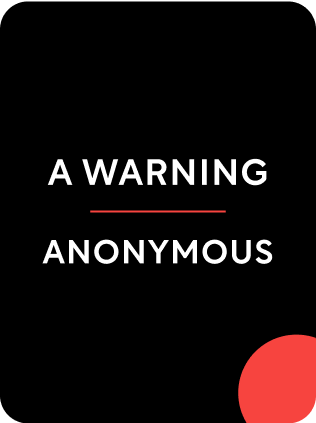

This article is an excerpt from the Shortform book guide to "A Warning" by Anonymous. Shortform has the world's best summaries and analyses of books you should be reading.
Like this article? Sign up for a free trial here .
What was it like to work under Donald Trump’s government? How did he run his office in the White House?
Working under Donald Trump’s government was hardly a walk in the park. According to the anonymous author of A Warning, a book into the behind-the-scenes of Trump’s administration, the president didn’t even know how the executive branch worked and often gave orders to the wrong people.
Here is an insider look at what it was like to work under Donald Trump’s government.
Working Under Donald Trump’s Government
From the early days in the White House, Trump showed no interest in or ability to manage the daily functions of government. This continues to be a problem. He can’t lead because he doesn’t understand how the executive branch works.
Departments and agencies are confused about what to do and who’s in charge. Trump may tell the secretary of defense to do something that’s the job of the secretary of state. He sometimes tells son-in-law Jared Kushner to do the jobs of multiple people. Policies aren’t thought out or coordinated; issues are ignored until they reach a crisis point. With its haphazard processes, the administration is prone to violating laws, ethics, and normal procedure.
Some aides and supporters want to believe there’s a method to Trump’s madness, which will be revealed in time—that “it’s part of his genius.” Senior advisor and campaign holdover Stephen Miller encourages chaos as a deliberate strategy. For instance, early on, he urged that the White House “flood the zone” with as many policy pronouncements as possible, regardless of legality, to overwhelm Democrats. Top officials soon began trying to insulate their departments from Trump’s mismanagement and inappropriate requests.
Dumb, Impossible, or Illegal
Members of the Steady State have observed that the president’s requests typically fall into one of three categories: dumb, impossible, or illegal. Here are some examples:
- Dumb: Trump wanted to shut down the government because he was upset with congressional budget negotiations. However, it would mean losing Republican congressional seats in the midterm election, as public services and paychecks for federal employees stalled and dissatisfaction spread. Trump backed down, but resurrected the idea later.
- Impossible: In February 2018, Trump proposed arming teachers to end gun violence in schools. This was impractical because of the training that would be required, the cost of the guns, and the likelihood it would make the situation worse. Fortunately, no one jumped on board with the idea, so he dropped it.
- Illegal: Sometimes, Trump makes unlawful proposals because he doesn’t understand federal law. For instance, he might order an agency to stop spending money on a particular program, which he can’t do if Congress has approved the funds. Along that line, he’s repeatedly tried to stop foreign aid to certain countries.
Proposals that are dumb, impossible, and illegal, often revolve around the issue of immigration, which Trump views as the greatest crisis in U.S. history. For example, he wanted to designate immigrants as “enemy combatants”—the designation used for terrorists—so the administration could keep them out of the country. He brought it up randomly, eliciting “those polite smiles reserved for a deranged relative.”
When he didn’t get pushback, Trump discussed shipping immigrants to Guantanamo Bay as a deterrent to trying to enter the U.S. Word got out and a career diplomat characterized it as “completely batshit.” Advisors told him it was too expensive because Trump sometimes found cost arguments persuasive. They managed to squelch the proposal, although there’s never any guarantee a bad idea is gone for good.
Some of Trump’s worst ideas could have cost him his presidency if implemented. Yet the people working to protect him from this were the ones he ended up wanting to fire.
Donald Trump: An Advocate for Big Government
Trump is a champion of big government, although he decries Democrats for having socialist views. In some ways, the government under Trump is even larger and more wasteful than it was in the previous Democratic administration.
Due to the 2011 Budget Control Act passed by Congressional Republicans, the deficit was shrinking under Obama. However, in a deal with Democrats, Trump discarded the act’s spending limits. The deficit has risen each year of the Trump administration—the government will soon be spending a trillion dollars more than it brings in. In addition, the U.S. debt (money we borrow from other countries) has reached another record. Trump proposed a record-high budget in 2019.
This profligacy betrays conservative principles and breaks Trump’s promises of fiscal responsibility—he pledged to eliminate the debt during his time in office, apparently just to lull conservatives into supporting him.
He appears to be as unconcerned about bankrupting the country as he has been about driving his businesses into bankruptcy. According to sources, when a handful of conservatives cautioned him on the dangers of runaway spending, he answered, “Yeah, but I won’t be here.” Trump’s love for grandiose things apparently includes a big federal government, when it can be used to enhance his power.

———End of Preview———
Like what you just read? Read the rest of the world's best book summary and analysis of Anonymous's "A Warning" at Shortform .
Here's what you'll find in our full A Warning summary :
- An inside look at the chaotic Trump administration written by a senior Trump administration official
- An examination of Trump's authoritarianism and threats to democracy
- The three options that existed for removing Trump from office






